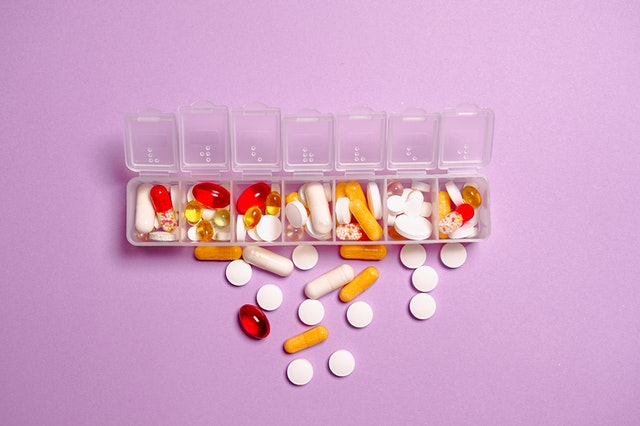General information of medication safety
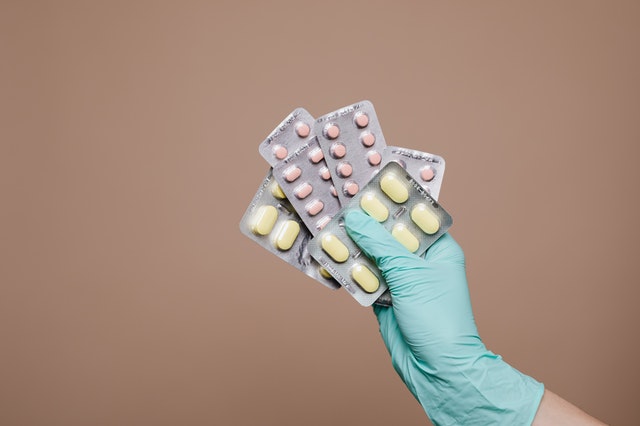
The most up-to-date version of the PTCB® Exam (in 2020) covers four regions of consideration, but the questions are not isolated into segments on the actual test. This region of study, Medicines, account for generally 40% of the total test questions (you can get more information with the Comprehensive PTCB Study Guide). That’s nearly half, it is necessary for you to exceptionally well arrange for questions on the concepts in this medication safety study guide.
The questions on medication safety are for the most part taken from the previous version test’s Pharmacology area, but moreover, incorporate many concepts that were within the Sterile as well as Non-Sterile Compounding and Inventory Management from the previous version of the PTCB® Exam. There’s a completely new concept in the current version, Narrow Therapeutic Index (or also called NTI) Medications, that was not recorded within the substance diagram of the old version test.
Medication names and classifications
Similar to numerous other professions, knowing and utilizing the fitting lexicon is often considered a critical portion leading to the success of the work. Being recognizable with common pharmaceutical names and spellings will make it less demanding to know exactly what the patients want and communicate with other healthcare experts. Within the domain of pharmacy in general, it is significant to be correct with names and spelling, since two medicines may have exceptionally comparable names but be utilized for immensely diverse purposes. Regularly, medicines are known by both their brand and a bland title. A few healthcare experts or patients may utilize them, making it basic to know both names for each pharmaceutical for the purpose of setting up successful communication.
- Generic names
Generic drugs are ordinarily the lower-cost forms of brand-name drugs. A pharmaceutical is created under its brand title just whereas under patent (approximately last for about 20 years) because the pharmaceutical company who made that type of drug has the sole rights to it. After that, other pharmaceutical companies can fabricate it beneath the non-specific title, which may moreover be known as the chemical title.
- Brand names
Brand names are regularly shorter compared to generic names; subsequently, drug producers regularly utilize brand names to publicize modern drugs. It is absolutely vital for pharmacy staff to note that one nonspecific medicate may have numerous brand names, depending on medicating definition and producer (for example, zolpidem is found in Intermezzo®, Edluar®, Ambien®, and Zolpimist®). The primary letter of a brand name of drugs should be capitalized because it is legally protected by its medicate producer. It is vital to exactly know or at least be familiar with the brand and non-specific names for the Best 200 medications, as they are utilized as often as possible in reality.
- Medication classifications
Pharmaceuticals are classified into medicating classes based on how they work (instrument of activity) and influence the body. Regularly, the postfix of a drug’s generic name is able to demonstrate its medicate class. For illustration, pharmaceuticals that conclude with -olol (e.g., metoprolol and propranolol) are blood pressure-lowering specialists known as beta-blockers. In some cases, the prefix of a drug’s bland title will demonstrate its sedate course. To be more specific, pharmaceuticals that start with cef-/ceph- (e.g., ceftriaxone and cephalexin) have a place in the anti-microbial course of medicines that are typically known as cephalosporins.
Therapeutic equivalence
Therapeutic equivalence is assigned when two medicate items meet strict criteria in understanding with the FDA (which stands for the Food and Drug Administration) Orange Book. Pharmaceutical equivalents, go along with pharmaceutical alternatives as well as therapeutic equivalents all go under the umbrella of therapeutic equivalence. By law, a generic medication that appears helpful proportionality must be substituted for the brand title item when filling a medication unless a nonexclusive isn’t on the advert or the prescriber regards the brand as therapeutically essential.
Drug interactions and contraindications
Drug interactions often happen for numerous reasons and can run in seriousness from gentle to life-threatening. It is critical to instruct patients about the potential for drug interactions as well as to depict any antagonistic responses they may encounter during the process of utilizing drugs for their treatment.
- Drug-Disease
Drugs that are utilized for one malady may have a risk for worsening or exacerbating another disease. To be more specific, utilizing ibuprofen for pain in a patient with heart hazard may be considered a potential drug-disease interaction, as ibuprofen can cause liquid maintenance and decline heart disappointment. In case a persistent with heart failure tolerates ibuprofen well, at that point the interaction isn’t clinically critical; but in the event that the patient’s heart hazard worsens after beginning to use ibuprofen, at that point, it is recommended to consider a completely new approach to oversee pain.
- Drug-Drug interactions
Drug-Drug interactions between two (or more) medicine drugs are common, can happen for an assortment of reasons, and ought to be assessed by the drug specialist earlier to medicate apportioning. Taking numerous medicines, being endorsed drugs by numerous healthcare experts, and utilizing numerous drug stores can increase a patient’s hazard of encountering a drug-drug interaction. Omeprazole, a medicine utilized to treat acid reflux, interatomic with the digestion system of clopidogrel, an antiplatelet pharmaceutical. This combination ought to be prevented and other types of alternative therapies to treat acid reflux ought to be carefully considered. Drug-drug intuition can moreover happen between medicine and OTC(short for over-the-counter) medicines.
- Drug-Dietary supplement
St. John’s wort has the foremost potential for interaction with medical drugs. For illustration, it has been related to an expanded hazard of dying with the blood-thinning medicine sedate warfarin and improved impact of medicine drugs utilized for discouragement and uneasiness. Additionally, vitamin E at tall dosages has been related to an expanded hazard of dying; combining vitamin E with warfarin further increases this hazard. Usually, it is the main reason why when talking to patients, pharmacists need to ask them about all the medicines they take, including even vitamins and supplements for the purpose of getting a total pharmaceutical list.
- Drug-Laboratory
Research facility test that comes about is once in a while influenced by types of medications; in any case, since the test that comes about may be erroneously positive or negative, it is critical to be mindful of the potential for this interaction to happen. For case, finasteride may be a medicine sedate utilized to recoil a broadened prostate. It may diminish a man’s prostate-specific antigen, a research facility test utilized to screen for prostate cancer. In case a research facility comes about that is deciphered without knowledge of the persistent taking of finasteride (and so having an erroneously moo PSA), it could meddle with the convenient conclusion of prostate cancer. Biotin could be a vitamin that advances hair, skin, and nail wellbeing. Taking this pharmaceutical can cause untrue readings in numerous research facility tests, counting TSH (thyroid-stimulating hormone) testing.
- Drug-Nutrient
Supplements incorporate vitamin supplements and supplements from nourishment. Calcium is a fundamental supplement that can be ingested within the frame of nourishment (drain), dietary supplements (calcium supplement), or OTC drugs (stomach settling agent). In any frame, in case you take calcium at the same time as a fluoroquinolone anti-microbial (for example, ciprofloxacin), it can have the potential to diminish the absorption of the anti-microbial within the body, in this manner diminishing the capacity of the antibiotic fighting against infections.
Medication specifications and calculations
It is critical for pharmacy technicians to be recognizable with common doses, dose shapes, qualities, and units. This will make it simpler to distinguish the right medication, communicate with other healthcare experts, and indeed distinguish potential fake medicines. Numerous questions appearing on the PTCB® Exam around this subject may incorporate calculations.
- Strength and Dose
Drug strength is the number of dynamic drugs in any given measurement frame. The drug’s quality will be famous quickly after a medicate title and is commonly communicated in terms of mg (short for milligrams) or mcg (short for micrograms) for verbal tablets or capsules, mg/mL (short for milligrams/milliliter) for fluid arrangements, and grams (g) for topical creams, gels, and treatments. Drugs can also be accessible in more than one strength. It is vital to get it common dosing units and how to change over from one to another.
- Dosage forms
The dosage form of a drug is often considered another term for its physical frame. Drugs come in all shapes (e.g., tablets, solutions, capsules, patches, and creams) and sizes (e.g., 10 mcg, 70 mg, and 5 g). One critical dose shape to direct on is the suspension because it ought to be shaken in order to equitably scatter the suspended particles and convey uniform measurements to the quiet. A few topical solutions, like betamethasone, come in a few shapes such as an emollient, cream, and ointment.
- Administration routes
Popular administration routes incorporate inward breath, verbal, nasal, rectal, vaginal, topical, and transdermal. It is of the most extreme significance to precisely distinguish the expecting way for a drug to be given. Within the case that a persistent would take a capsule by mouth rather than embedding it into the rectum, medication absorption, safety, and/or adequacy may be compromised. In case there’s any concerns or questions related to administration routes, a call to the prescribers or pharmacists ought to be made for the purpose of clarifying.
- Special administration and handling instructions
Several types of medications require special capacity, administration, and dealing with information that is critical for the patient to be mindful of. A few suppositories, such as promethazine, must be put away within the fridge earlier to utilize and ought to be handled with gloves because it has the potential to soften at room temperature or indeed from the body warm from your hands. Moreover, suppositories come bundled in thwart or difficult plastic wrap. These require special pharmacy instructions to unwrap earlier to insertion into the rectum, as numerous patients may be new with suitable administration pharmacy methods.
- Duration of Drug Therapy
The typical duration of drug therapy is often decided by the diagnosis as well as several other patient-specific components. Chronic conditions, misery, or diabetes as examples, may require progressing pharmaceutical treatment. Several more intense issues, such as torment or infection, may have to be treated for a couple of days or weeks. In case patients take medicine for less or more time than prescribed, it may cause issues down the street, such as uncontrolled diabetes or anti-microbial resistance. The prescriber sets the term of medicate treatment for each medicine composed based on the basic condition being treated.
Other common and severe effects of medication
Unfavorable adverse side effects are popular and can run from mellow to serious responses. Persistent counseling ought to incorporate instruction on almost what side impacts to see out for. In spite of the fact that all side impacts are considered undesirable, most are considered negative but a few could be considered positive depending on the understanding, for example, hair development or weight loss.
- Side effects
Adverse side effects for several types of drugs can regularly be anticipated based on how the drug works. However, because adverse side effects are not a portion of the common therapeutic effect of the drugs, they are considered undesirable. Common side impacts may incorporate migraine, stomach disturbed, or discombobulation; a few side impacts go absent over time whereas others are anticipated to proceed for as long as a drug is being utilized. In expansion, a few side impacts may begin right after organization, whereas others may happen after many months or not at all. Indeed with the same type of drugs, adverse side effects can moreover contrast by measurements, dose shape, and course of the administration route.
- Adverse effects
Unfavorable impacts are considered more extreme than side impacts and regularly warrant discontinuation of treatment or conceivably crisis restorative consideration based on its seriousness.
Adverse events are those that contrarily affect a person’s well-being or illness administration. Muscle torment and cramping are common side impacts of statin drugs utilized to treat tall cholesterol. In any case, severe unexplained muscle pain went with by dim (tea-colored) pee is an unfavorable impact of statin drugs, showing huge muscle breakdown (deductively known as rhabdomyolysis). This would warrant suspension of the particular statin sedate totally and counsel with the doctor to look for elective treatment.
- Allergies
Whereas a drug’s most common side impacts can regularly be anticipated, hypersensitivities are much less unsurprising since the body’s safe reaction contrasts altogether from individual to individual. Unfavorably susceptible responses make up a mere 10% of all medicate side impacts; be that as it may, unfavorably susceptible responses can be life-threatening. Anaphylaxis is the foremost genuine unfavorably susceptible response and can result in hives, swelling of the confront or throat, wheezing, and even leading to death.
Anti-microbials are the foremost common causes of anaphylactic responses. It is vital to note that a few patients are unfavorably susceptible to inerts (non-drug) fixings, such as gluten or certain colors; sedate compounding permits for medicines to be made to suit the particular needs of patients. When inquiring patients about their sensitivities, it is critical to compose down the response sort. Anaphylaxis to medicine is considered a genuine sensitivity, while a disturbed stomach isn’t.
Drug stability
Pharmaceutical solidness is absolutely vital for the purpose of preserving the astuteness and secure utilization of the pharmaceutical item. Regardless of whether it may be a bottle of affront or an antibiotic suspension, all pharmaceutical items must be taken care of and put away appropriately to preserve the drug’s potency and integrity. Medicines can end up ruined, coming about in a misfortune of medicating soundness, and these ought to not be utilized because the potency and integrity of these drugs have been compromised.
- Oral suspensions
Verbal suspensions are solutions that are provided in a manufacturer’s bottle as a powder. These items can be put away at room temperature until the termination date is met on the holder. In any case, the powder must be blended with the demonstrated sum of water earlier to apportion to get to be a suspension. Once blended with water, the verbal suspension must be given a beyond-use date based on the manufacturer’s solidness testing information. To be more specific, amoxicillin verbal suspension must be disposed of 14 days after reconstitution, with suggested capacity within the fridge.
- Insulin
All insulins must be put away within the fridge earlier to utilize, making it steady until the close date shown on the bundle labeling. Once in utilization, it is just available and good for a certain sum of time depending on the sort of insulin. Once in utilization, affront aspart (or the NovoLog®) is steady for up to 28 days at room temperature, whereas affront detemir (or the Levemir®) is steady for up to more than 40 days at room temperature.
- Reconstitutables
Drugs that are provided as a dry powder require reconstitution with a diluent earlier to utilize. Numerous solutions are fabricated in dry powder shape to permit an expanded rack life. Vancomycin is an anti-microbial that comes in a dry powder frame in a vial. This medicine must be reconstituted with the right sum of water earlier to include it into an intravenous sack. Clindamycin and benzoyl peroxide is topical medicine utilized to treat skin break out. Earlier to apportioning to the patient, it must be blended with the right sum of sterile water and be given a close date of 72 days.
- Injectables
A few injectables come commercially accessible and can be apportioned to the understanding with a substantial medicine, whereas others must be drawn up and managed within the healing center or a doctor’s office. Each features a distinctive stability level and termination date based on the manufacturer’s testing information. Ceftriaxone is an anti-microbial utilized to treat an assortment of diseases. Once reconstituted, it is steady for 24 hours at room temperature and can be managed intramuscularly. Dulaglutide may be a subcutaneous injectable utilized to oversee sort 2 diabetes. It can be put away within the fridge until the bundle termination date but is as it were steady for up to 2 weeks in case it is unrefrigerated.
- Vaccines
Vaccines are vulnerable and fragile so they must be put away appropriately to preserve the keenness and minimize weakening. Lacking capacity and handling can lead to vaccine ineffectiveness. All live and constricted vaccines must be put away within the fridge between 35-46 degrees Fahrenheit, but Zostavax. Zostavax could be a live antibody that must be put away within the cooler earlier for the purpose of administration. Once an antibody is evacuated from the fridge or cooler, it ought to be managed to the quiet without delay to diminish the hazard of corruption.=
NTI (Narrow Therapeutic Index) Medications
Concurring to the FDA, contract helpful list solutions are those drugs “where little contrasts in measurements or blood concentration may lead to genuine restorative disappointments and/or antagonistic medicate responses that are life-threatening or result in tireless or critical inability or incapacity”.These drugs require patients to experience normal blood testing to ensure the sedate concentration is to the worthy extend. Concentrations below the acceptable range lead to no helpful advantage but the potential for undesirable side impacts.
- Incompatibilities
Incompatibility happens in case two types of drugs are blended with each other and come about in an unacceptable item, either by physical or chemical implies. Physical incompatibilities can regularly be seen obviously whereas chemical incompatibilities may or may not be really obvious.
- Physical incompatibilities
Physical incompatibilities ordinarily lead to a alter that can be seen by the bare eye. You ought to continuously check the physical item after making the compound to ensure that it is steady and congruous. Several obvious signs of physical incompatibilities incorporate:
- Unexpected cloudiness
- The formation of a precipitate more than one precipitate
- The change of original color
- Ingredients separation
Physical incompatibilities have the risk of being redressed by changing the solvents, fixing shapes, suspending operators, arranging or blending, etc. In any case, a few drugs are contradictory inside and out and ought to never be combined. An obvious case of physical incompatibilities is the expansion of calcium to ceftriaxone. This combination comes about precipitate that’s deadly.
- Chemical incompatibilities
Chemical incompatibilities regularly lead to an alter within the chemical cosmetics of the compounds that cannot be seen by the exposed eye. Several obvious signs of chemical incompatibilities incorporate:
- The reaction of oxidation-reduction
- The obvious change in pH of the drugs
- Degradation or/and Decomposition
- Hydrolysis
Medication storage
All drugs utilized within the drug store have capacity prerequisites. Drugs can be kept at room temperature, under refrigeration, or within the cooler depending upon medicate capacity necessities. A few drugs may have particular capacity prerequisites, counting light affectability or dampness confinements.
- Temperature ranges
Room temperature is characterized to fluctuate between about 68 and 77 (F degrees Fahrenheit). Refrigerated drugs ought to be kept at 36 to 46 F. Drugs put away within the cooler are kept at a temperature of between -13 and 14 F. In the event that a medication has no particular capacity prerequisites, it is recommended to keep all of them at room temperature.
- Light sensitivity
A few drugs are delicate to light (photosensitive) and have the potential to corrupt in case they are not put away legitimately. When apportioning a medicine, pills are ordinarily numbered out from the first manufacturer’s holder and apportioned in a patient-specific labeled golden bottle. Golden bottles are utilized for apportioning as the color makes a difference in avoiding beams of light. A few medicines, like nitroglycerin, have extraordinary capacity requirements and must be apportioned within the unique manufacturer’s holder.
- Restricted access
Types of medications that are considered controlled substances are kept inside a particular confined get to range of the drug store. With that being said, these medicines ought to moreover be kept in a secure place absent from children and teenagers. Controlled substances within the category of CIII-CV, like lorazepam, zolpidem, and buprenorphine can be kept with the normal pharmaceutical stock of a drug store; be that as it may, a few drug stores still select to keep them in a more restricted access region. Drugs within the CII category have the most elevated manhandle potential on the pharmacy market and must be kept regularly in a vault or cage.
Besides, you can get more about PTCB Laws And Regulation
Above is our Study Guide For Medication Safety. We hope that all the information and knowledge provided in this article can help you when working in the pharmacy or taking the PTCB® exam.
If you want to get more PTCE Study Guides, visit our website and take our free PTCE practice test or download it for your IOS or Android devices now!
[Sassy_Social_Share]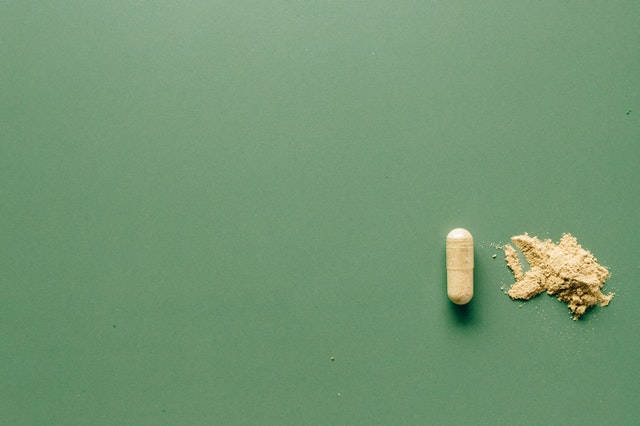
Pharmacy Sig Codes: All Medical and pharmacy abbreviations You Should Know
It is critical to understand and retain pharmacy sig codes. We've included a master list of these abbreviations in this blog.
January 1, 2022
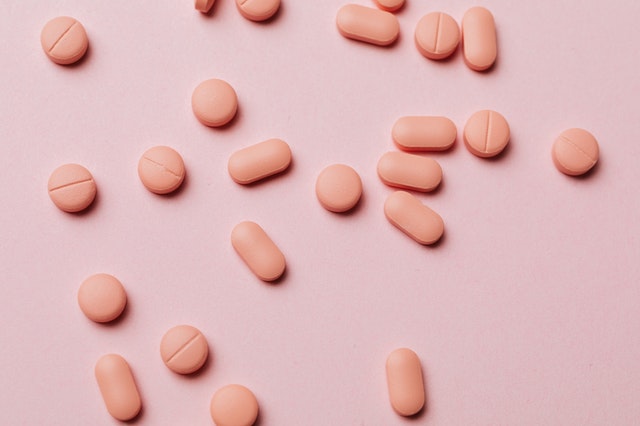
List Of Drug Suffixes And Meaning
In this article, we give you the way to remember the top 200 drugs easier with drug suffixes and meaning. Let’s get started!
January 1, 2022
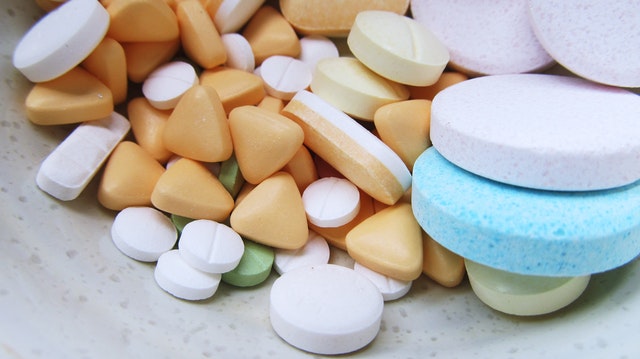
Top 200 Drugs Every Pharmacist Should Remember [2025 Updated]
Let's look at the top 200 drugs list, each of which includes a list of all active chemicals as well as the drug class to which each ingredient belongs.
January 1, 2022

